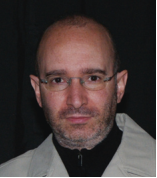报告题目:Chemical Design & Electronic Structure Engineering of Advanced Structures for Solar Energy Conversion
报 告 人:Lionel Vayssieres
报告时间:2019年12月3日(星期五)上午10:00
报告地点:长安校区启翔楼233会议室
邀 请 人:Igor Perepichka 教授
承办学院:柔性电子研究院
报告人简介

Lionel Vayssieres received a PhD in Chemistry (P.&M. Curie University, Paris, 1995) and was a Visiting Scientist at Uppsala University (Sweden), University of Texas at Austin (USA), UNESCO Centre for Macromolecules & Materials, Stellenbosch University and iThemba LABS (South Africa), Chemical Sciences Division, LBNL; EPFL (Switzerland) and at NIMS (Japan). He co-authored 100+ publications cited 13000+ times (5000+ times since 2014, Google Scholar), among which 8 ESI highly cited papers (5 as first-author). He listed among the top 1% scientists in Materials Science (Thompson Reuters). Dr. Vaysseries gave 410+ lectures in 33 countries at conferences, universities, governmental and industrial institutes and acted as organizer, chairman, program committee and/or advisory member for major international projects worldwide. Since 2012, he is a full time 1000-Talents Scholar Professor at Xi’an Jiaotong University, China, where he is Co-founder & Scientific Director of IRCRE (525+ research articles, 16000+ citations, 24 ESI highly cited papers since 2012). He is also, since 2003, the founding Editor-in-Chief of Int. J. Nanotechnology, a referee for 100+ SCI journals and major funding agencies worldwide, the recipient of 2014 Sanqin & 2016 National Chinese Government Friendship Awards, one of the most cited researchers in China in Materials Science (Scopus) yearly since 2014 and one of the 2016 Global Ambassador for the American Ceramic Society.
报告简介
The demand of low-cost and highly efficient materials has become a major challenge scientists are facing to answer crucial contemporary issues such as clean alternative energy resources for a safer and cleaner environment. One of the promising alternatives for the transition of fossil fuel-based energy to a clean and renewable one relies on the widespread implementation of solar energy systems, yet the high cost of energy production and low-energy of currently used material combinations pose an intrinsic limitation. New materials development is required to achieve crucial increase in power generation and conversion efficiency. The necessity of materials development which is not limited to materials that can achieve their theoretical limits, but makes it possible to raise these limits by changing the fundamental underlying physics and chemistry is critical. Low-cost purpose-built materials with optimized structure and properties combined with inexpensive large scale manufacturing methods will play a decisive role in the success of renewable energy systems. However, fabricating large areas of such materials is a daunting challenge. Novel smarter and cheaper fabrication techniques and better fundamental knowledge of their properties using nanoscale phenomena such as quantum confinements to create multi-functional structures and devices is the key to success. Such concepts will be demonstrated by the thermodynamic modelling, low-cost aqueous design and fabrication of highly oriented crystalline arrays of metal oxide quantum dots and rods-based structures and devices with controlled orientation, size and shape onto various substrates designed at multiple scales by aqueous chemical growth at low-temperature along with the in-depth study of their electronic structure and quantum confinement effects performed at synchrotron radiation facilities as well as their electrical and photoelectrochemical applications for crucial sustainable solar energy conversion such as solar fuels.